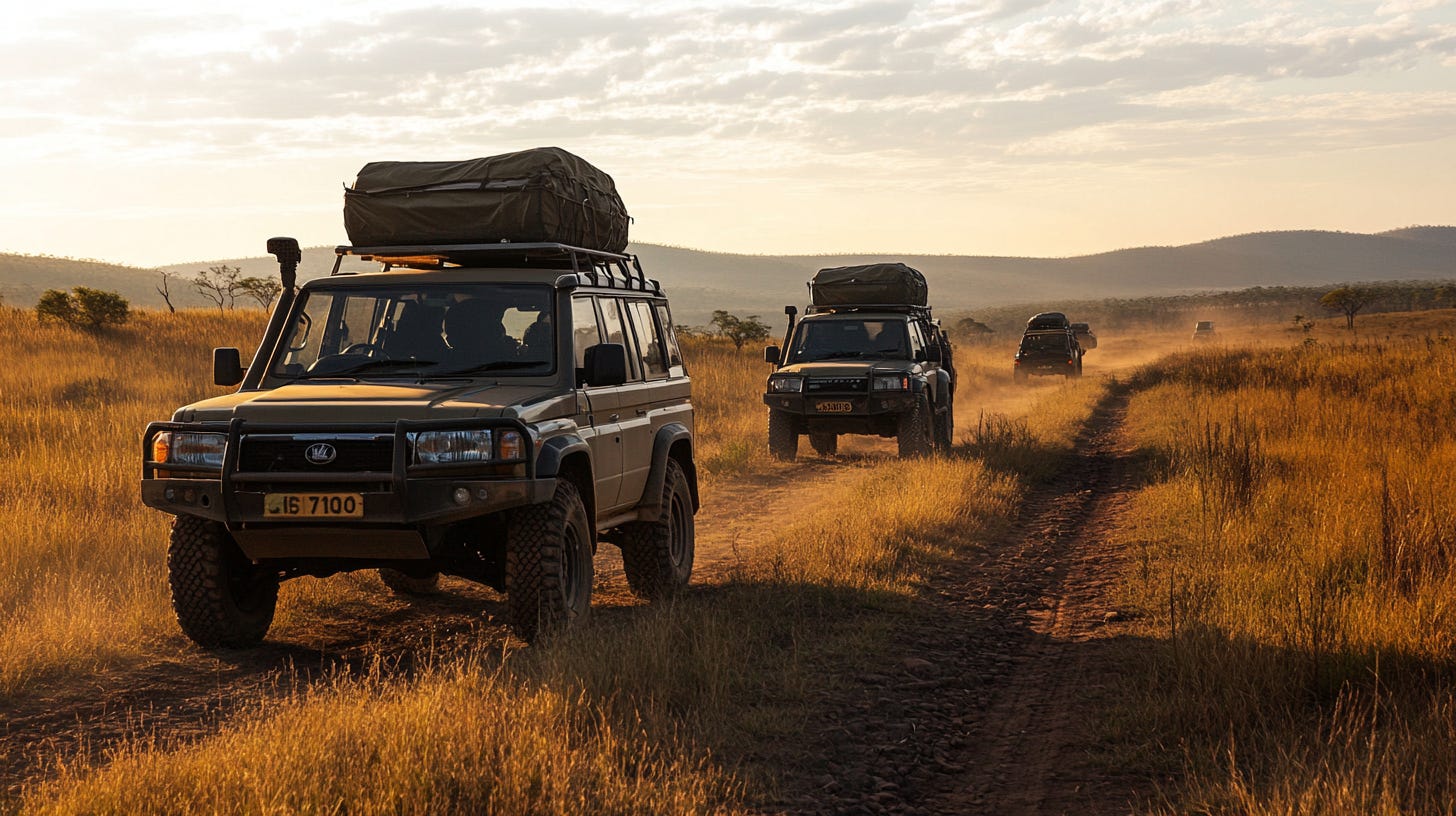Top 10 Overlanding Mistakes and How to Avoid Them

Overlanding is an incredible way to explore the world beyond paved roads and immerse yourself in the beauty of remote landscapes. However, the freedom and adventure of overlanding come with challenges, especially for those just getting started. Mistakes happen, and while they’re often part of the learning process, avoiding common pitfalls can make your journey safer and far more enjoyable. Here are the top 10 overlanding mistakes and how to steer clear of them
1. Overpacking Your Vehicle
It’s easy to get caught up in “just in case” packing, but overpacking adds unnecessary weight and can put extra stress on your vehicle, making it harder to navigate tough terrain.
- How to Avoid It: Pack the essentials, and focus on multipurpose gear that saves space. Do a trial run by packing your gear and then removing non-essentials to lighten the load. Less weight means better fuel efficiency and improved handling off-road.
2. Underestimating Trail Difficulty
Not all trails are created equal, and underestimating the difficulty can lead to a dangerous situation. Trails marked as “moderate” may require significant experience, especially in challenging conditions.
- How to Avoid It: Research your routes thoroughly. Check online forums, trail guides, and videos to understand what you’re getting into. Start with easier routes and gradually work your way up as you gain experience and confidence.
3. Neglecting Vehicle Maintenance
Your vehicle is your lifeline during an overlanding adventure. Neglecting routine maintenance can leave you stranded far from help.
- How to Avoid It: Before each trip, inspect your vehicle thoroughly. Check tire tread and pressure, oil levels, brakes, and suspension components. Address any issues before you hit the trail, and bring basic tools and spare parts to handle common repairs.
4. Not Carrying Enough Water
Water is essential, not only for drinking but also for cooking and cleaning. Running out of water can quickly become a dangerous situation, especially in hot or arid climates.
- How to Avoid It: Always bring more water than you think you’ll need—at least one gallon per person per day. Collapsible water containers are a great way to carry extra without taking up much space.
5. Ignoring Tire Pressure
Tire pressure plays a crucial role in off-road performance, and not adjusting it for different terrains can make getting stuck more likely.
- How to Avoid It: Use a tire deflator to adjust your tire pressure according to the terrain. Lower pressure helps in sand, mud, and rocky areas by increasing the contact patch, improving traction. Don’t forget an air compressor to reinflate tires when returning to pavement.
6. Relying Solely on Digital Navigation
While GPS and mapping apps are fantastic tools, technology can fail. Dead batteries, software glitches, or loss of signal can leave you without directions in remote areas.
- How to Avoid It: Always carry paper maps of the area you’re exploring and a compass. Take some time to familiarize yourself with how to use them—having a physical backup can be a lifesaver if your GPS stops working.
7. Not Being Self-Sufficient
Expecting to find help, fuel, or even water at every stop is a mistake that can put you in a tight spot when traveling through remote areas.
- How to Avoid It: Plan to be completely self-sufficient. Carry enough fuel, food, water, and supplies to last longer than your intended trip. Bringing extra ensures you’re prepared for unexpected delays or detours.
8. Traveling Alone Without Proper Precautions
Solo overlanding is a rewarding experience, but it also comes with greater risks. Without another vehicle to assist, a simple issue can turn into a major problem.
- How to Avoid It: If you’re traveling alone, make sure someone knows your itinerary and expected return time. Carry a satellite phone or a personal locator beacon (PLB) in case of emergency. If possible, travel in convoy with another vehicle—having a buddy makes a huge difference.

9. Poor Load Distribution
How you pack your vehicle matters. Poor load distribution can affect your vehicle’s handling, especially on uneven terrain.
- How to Avoid It: Keep heavy items low and centered. Secure all gear to prevent shifting while driving, as unbalanced weight can lead to vehicle instability, especially on steep inclines. A properly distributed load ensures better control and safety.
10. Ignoring Leave No Trace Principles
One of the biggest mistakes overlanders can make is failing to respect the environment they’re exploring. Leaving trash or damaging natural areas not only harms the environment but can lead to trail closures.
- How to Avoid It: Always follow Leave No Trace principles. Pack out all your trash, avoid damaging vegetation, and stick to established trails and campsites. By minimizing your impact, you help preserve these beautiful areas for others to enjoy.
Final Thoughts
Overlanding is all about embracing the unexpected and enjoying the journey, but avoiding these common mistakes will help make your adventures safer and more enjoyable. Preparation, respect for the environment, and self-sufficiency are key to a successful overlanding experience. Learn from these mistakes, and you’ll be ready to tackle whatever the trail throws your way—creating unforgettable memories on the road less traveled.
Stay prepared, stay safe, and happy overlanding!





Member discussion